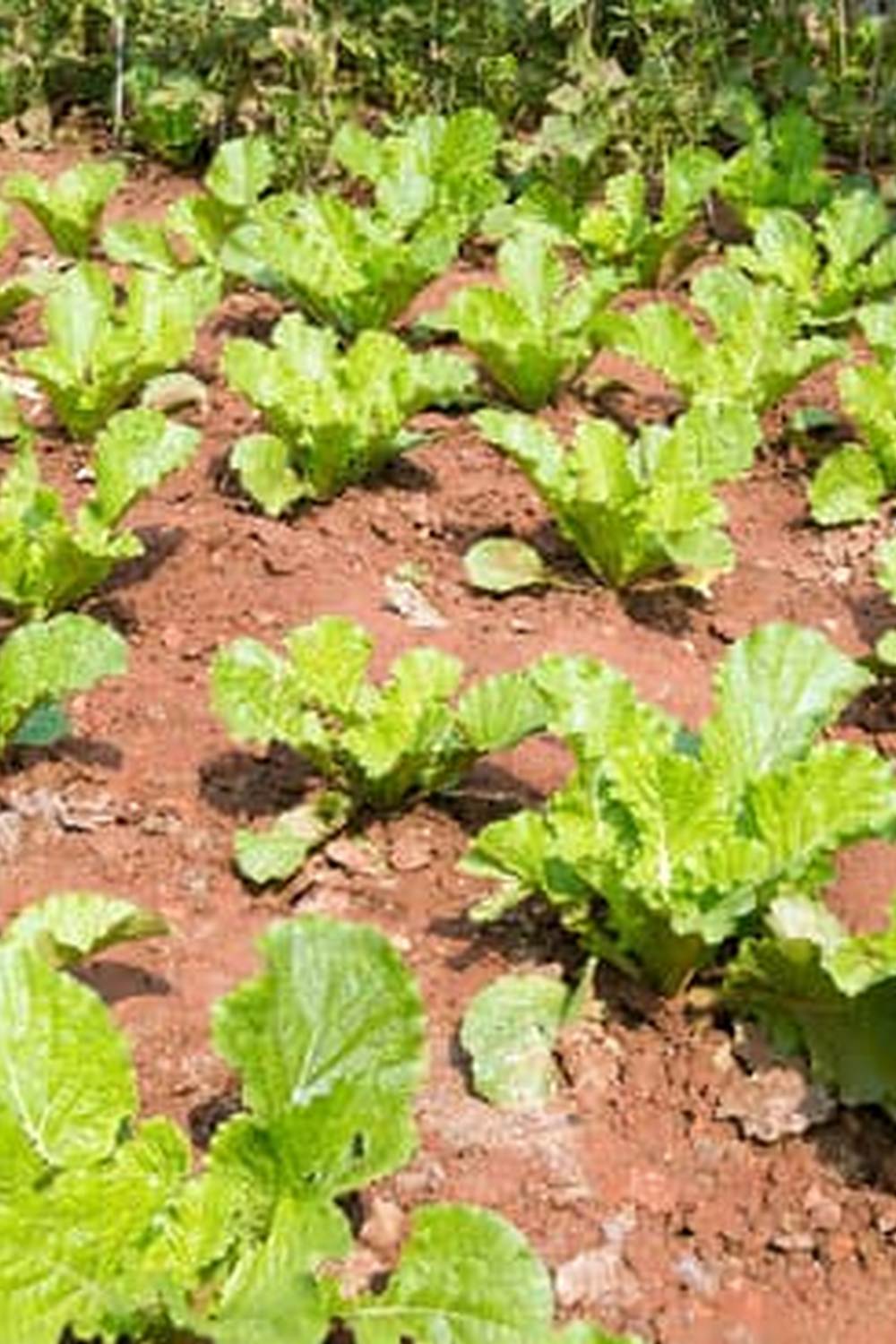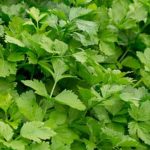Frugal vegetable gardening tips are a great way to enjoy the rewards of growing your own fresh produce without breaking the bank. In today’s economic climate, being able to cultivate a bountiful harvest while saving money is an appealing prospect for many. By employing cost-effective strategies and maximizing available resources, frugal vegetable gardening allows you to reap the benefits of homegrown vegetables without compromising on quality.
When it comes to frugal vegetable gardening, one of the key factors to consider is utilizing your space effectively. Assessing your space for gardening involves taking into account crucial elements such as sunlight exposure, soil quality, and access to necessary resources. By optimizing these factors, you can ensure that your vegetable garden thrives while minimizing unnecessary expenses.
In addition to space evaluation, selecting the right vegetables for your frugal garden is essential. Choosing varieties that are easy to grow, high-yield, and low maintenance can help maximize your savings while still enjoying a diverse range of homegrown produce. With a focus on cost-efficiency and practicality, frugal vegetable gardening tips aim to make cultivating your own vegetables accessible and rewarding for everyone.
Assessing Your Space
Amidst the rising costs of produce, more people are turning to frugal vegetable gardening as a way to save money and enjoy the benefits of homegrown fresh produce. Frugal vegetable gardening involves making smart choices in terms of space, vegetables, tools, and techniques to maximize yield without breaking the bank. By following some key frugal vegetable gardening tips, you can enjoy a bountiful harvest while keeping your expenses minimal.
One of the first steps in frugal vegetable gardening is assessing your available space. Take a good look at your outdoor area or balcony to determine where you can set up your garden. Consider factors such as sunlight exposure, soil quality, and access to water sources.
Vegetables typically need plenty of sunlight to thrive, so choose a spot that receives at least 6-8 hours of direct sunlight each day for optimal growth. Testing your soil can also help you understand its composition and pH level so that you can make necessary amendments to support healthy plant growth.
When it comes to choosing the right vegetables for your frugal garden, opt for varieties that are easy to grow, high-yield, and low maintenance. Some popular choices for frugal vegetable gardening include tomatoes, zucchini, lettuce, cucumbers, and green beans.
These vegetables are known for their productivity and require minimal effort to flourish in home gardens. By selecting the right plants based on your local climate and growing conditions, you can ensure a successful harvest without spending a fortune on specialized care or maintenance.
| Frugal Vegetable Gardening Tips | Assessing Your Space & Choosing the Right Vegetables |
|---|---|
| Garden in containers or raised beds if space is limited | Choose sunny spots for planting |
| Grow vertical veggies like tomatoes and cucumbers | Select high-yield vegetables like zucchini |
Choosing the Right Vegetables
One popular choice for frugal vegetable gardening is tomatoes. They are relatively easy to grow, produce a high yield per plant, and can be used in a variety of dishes. Additionally, tomatoes can be grown in containers or directly in the ground, making them versatile for different garden setups. Other excellent options include zucchini, green beans, and leafy greens like lettuce and spinach. These vegetables are known for their productivity and nutritional value while requiring minimal effort to maintain.
Incorporating herbs into your vegetable garden is another way to save money while enhancing the flavors of your dishes. Herbs such as basil, mint, parsley, and chives can easily be grown in small spaces or containers. Not only do they add freshness to your meals, but they also attract beneficial insects to the garden. By strategically choosing vegetables and herbs that align with your frugal gardening goals, you can enjoy a bountiful harvest without breaking the bank.
| Vegetable | Benefits |
|---|---|
| Tomatoes | Easy to grow, high yield per plant |
| Zucchini | Productive and versatile growth |
| Lettuce & Spinach | Nutritious leafy greens with minimal maintenance required |
| Herbs (Basil, Mint) | Enhance flavor of dishes & attract beneficial insects |
Budget-Friendly Tools and Supplies
When embarking on a frugal vegetable gardening journey, it is essential to consider the tools and supplies needed to ensure a successful harvest without breaking the bank. Fortunately, there are plenty of budget-friendly options available that can help you achieve your gardening goals without spending a fortune. From essential tools to affordable supplies, here are some recommendations for frugal vegetable gardening tips.
Essential Gardening Tools
One of the most important tools for any vegetable gardener is a reliable trowel for digging and planting. Opt for a sturdy, yet affordable option that will last through multiple growing seasons. Additionally, investing in a quality pair of garden gloves can protect your hands while working in the soil and handling plants. Look for durable gloves that provide both comfort and protection without costing a fortune.
Affordable Supplies
When it comes to supplies for your vegetable garden, there are several budget-friendly options that can help you save money while still ensuring a healthy and productive garden. Consider using homemade compost or organic mulch to enrich your soil and improve water retention – both of which can be made from items you already have at home. Additionally, repurpose items like egg cartons or plastic bottles for seed starting trays or plant markers to reduce costs on store-bought alternatives.
Multipurpose Solutions
To further cut costs in your vegetable garden, look for multipurpose solutions that can serve more than one function. For example, using twine or old pantyhose can double as support for climbing plants like tomatoes or cucumbers as well as ties for securing plants to stakes. By thinking creatively and reimagining everyday items as garden supplies, you can save money while still having all the essentials needed for successful frugal vegetable gardening.
DIY Gardening Projects
Creating DIY Planters
One of the best ways to save money on frugal vegetable gardening is by creating your own planters. Repurposing old containers like buckets, plastic bottles, or even wooden pallets can be a cost-effective way to start your garden.
You can drill holes in the bottom for drainage and fill them with nutrient-rich soil for planting. These DIY planters not only help you save money but also allow you to customize the size and shape according to your available space.
Homemade Watering Solutions
Watering your vegetable garden efficiently is essential for healthy plant growth, but investing in fancy irrigation systems can be expensive. Instead, consider making your own watering solutions using simple materials.
For example, you can repurpose plastic bottles by poking holes in the cap and burying them near your plants to deliver water directly to the roots. Another option is creating a DIY drip irrigation system using PVC pipes and a water source – this can help conserve water while keeping your plants hydrated.
Natural Pest Control Methods
Protecting your vegetable garden from pests doesn’t have to break the bank. Instead of reaching for costly chemical pesticides, opt for natural pest control methods that you can make at home. For example, mixing garlic, onion, pepper, and soap in water creates an effective insect repellent spray that won’t harm your plants or the environment.
Additionally, planting companion flowers like marigolds or herbs like basil can help deter pests naturally without spending extra money on expensive solutions from the store. By implementing these frugal pest control methods, you can keep your vegetable garden thriving without emptying your wallet.
Soil Enrichment and Composting
Frugal vegetable gardening tips can greatly benefit from focusing on soil enrichment and composting methods that are cost-effective yet highly beneficial. By enriching your soil, you can ensure that your plants have the necessary nutrients to thrive, leading to a bountiful harvest without breaking the bank. One of the most budget-friendly ways to enhance your soil is by starting a compost pile using kitchen scraps and other organic materials.
To get started with composting, consider setting up a designated area in your garden or backyard where you can begin collecting food waste such as fruit peels, vegetable scraps, coffee grounds, and eggshells. These items can be combined with yard waste like leaves, grass clippings, and small twigs to create a nutrient-rich compost that will improve the quality of your soil.
Utilizing homemade compost not only helps reduce landfill waste but also eliminates the need for store-bought fertilizers, saving you money in the long run.
Moreover, incorporating natural fertilizers into your gardening routine is another cost-effective way to enrich your soil and promote healthy plant growth. Organic options such as worm castings, seaweed extract, bone meal, and fish emulsion provide essential nutrients to your plants without harmful chemicals or synthetic additives.
These alternatives are often more affordable than commercial fertilizers and offer long-lasting benefits for your frugal vegetable garden. By implementing soil enrichment techniques like composting and using natural fertilizers, you can create a sustainable and economical solution for cultivating a thriving vegetable garden on a budget.
Pest Control on a Budget
Having a bountiful vegetable garden is a rewarding experience, but pests can quickly turn that joy into frustration. Implementing frugal pest control methods not only saves money but also promotes a healthier and more environmentally friendly garden. By using natural solutions and DIY techniques, you can effectively prevent and manage pests without relying on costly chemical treatments.
Here are some frugal vegetable gardening tips for pest control:
- Plant companion plants: Intercropping certain plants can help deter pests naturally. For example, marigolds repel nematodes, while planting basil alongside tomatoes can fend off pests like aphids and hornworms.
- Homemade insecticidal soap: Create a simple yet effective insecticidal soap by mixing liquid soap with water in a spray bottle. This solution can help control common pests like spider mites, aphids, and whiteflies without harming beneficial insects.
- Beneficial insects: Encourage the presence of beneficial insects like ladybugs, lacewings, and predatory beetles in your garden. These insects feed on harmful pests, helping to naturally keep their populations in check.
In addition to these methods, practicing good garden hygiene by removing weeds, fallen leaves, and debris can also help reduce pest infestations. By being proactive and implementing frugal pest control strategies early on, you can protect your vegetable garden without breaking the bank.
Harvesting and Preserving
In conclusion, frugal vegetable gardening is not only a cost-effective way to produce your own fresh and nutritious vegetables but also a rewarding and sustainable practice. By following the tips outlined in this article, you can make the most of your gardening space and resources, ensuring a bountiful harvest without breaking the bank.
When it comes to harvesting your vegetables, timing is crucial. Knowing when to harvest each type of vegetable is essential for optimal flavor and nutrient content. Proper storage techniques can also extend the shelf life of your produce, reducing waste and allowing you to enjoy your homegrown vegetables for longer periods. Additionally, using frugal methods such as pickling, freezing, or canning can help you preserve excess produce for future use, saving you money and ensuring nothing goes to waste.
Overall, embracing frugal vegetable gardening tips not only benefits your wallet but also promotes self-sufficiency and environmental sustainability. By assessing your space wisely, choosing the right vegetables, utilizing budget-friendly tools and supplies, implementing DIY gardening projects, enriching your soil with composting techniques, controlling pests without costly chemicals, and maximizing your harvest through proper storage and preservation methods, you can enjoy a successful vegetable garden that provides fresh produce throughout the season. Happy gardening.
Frequently Asked Questions
How Do You Plant a Vegetable Garden on a Budget?
Planting a vegetable garden on a budget can be done by starting small and growing vegetables from seeds rather than purchasing seedlings. Additionally, utilizing recycled materials for containers or raised beds can help save money on gardening supplies.
What Is One Money Save Hack for Growing Vegetables?
One money-saving hack for growing vegetables is to compost kitchen scraps and yard waste to create nutrient-rich soil for your garden. This reduces the need to purchase fertilizer and also helps minimize waste.
What Are the Best Money Saving Vegetables to Grow?
Some of the best money-saving vegetables to grow include tomatoes, zucchini, lettuce, and beans. These vegetables are relatively easy to grow from seeds or seedlings and produce high yields, providing a great return on investment in terms of the food you can harvest from your garden.

If you’re looking to get into vegetable gardening, or are just looking for some tips on how to make your current garden better, then you’ve come to the right place! My name is Ethel and I have been gardening for years. In this blog, I’m going to share with you some of my best tips on how to create a successful vegetable garden.





